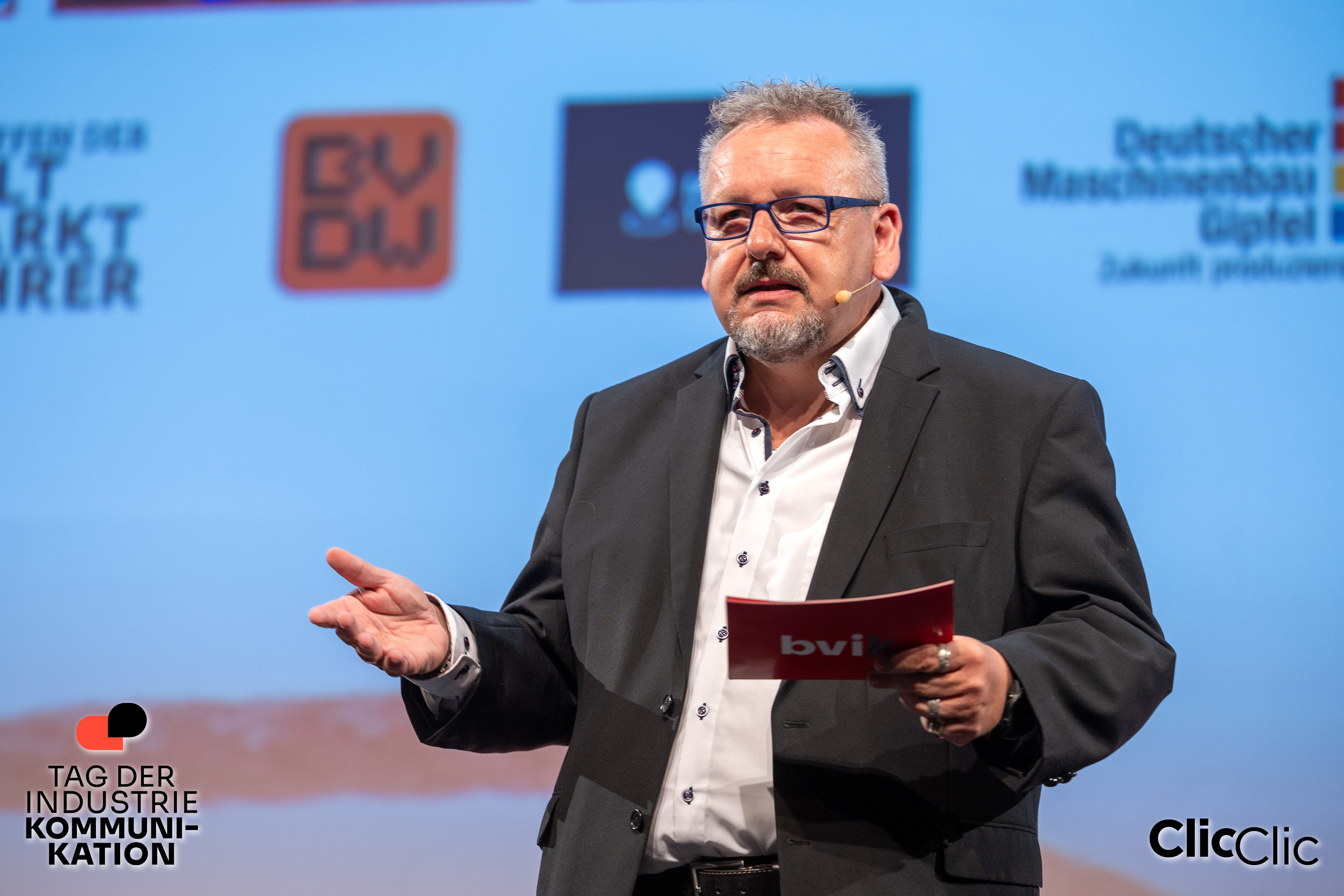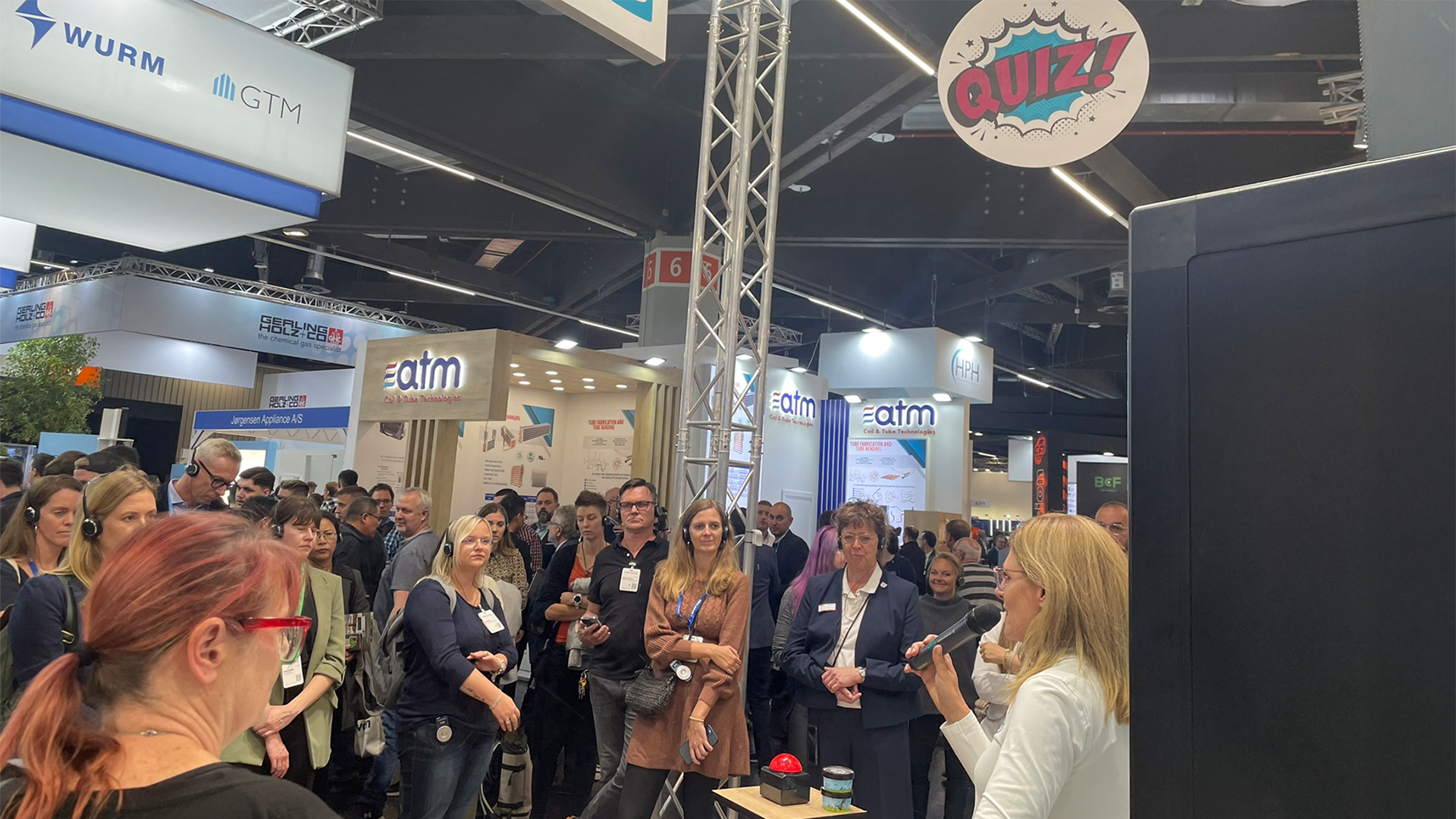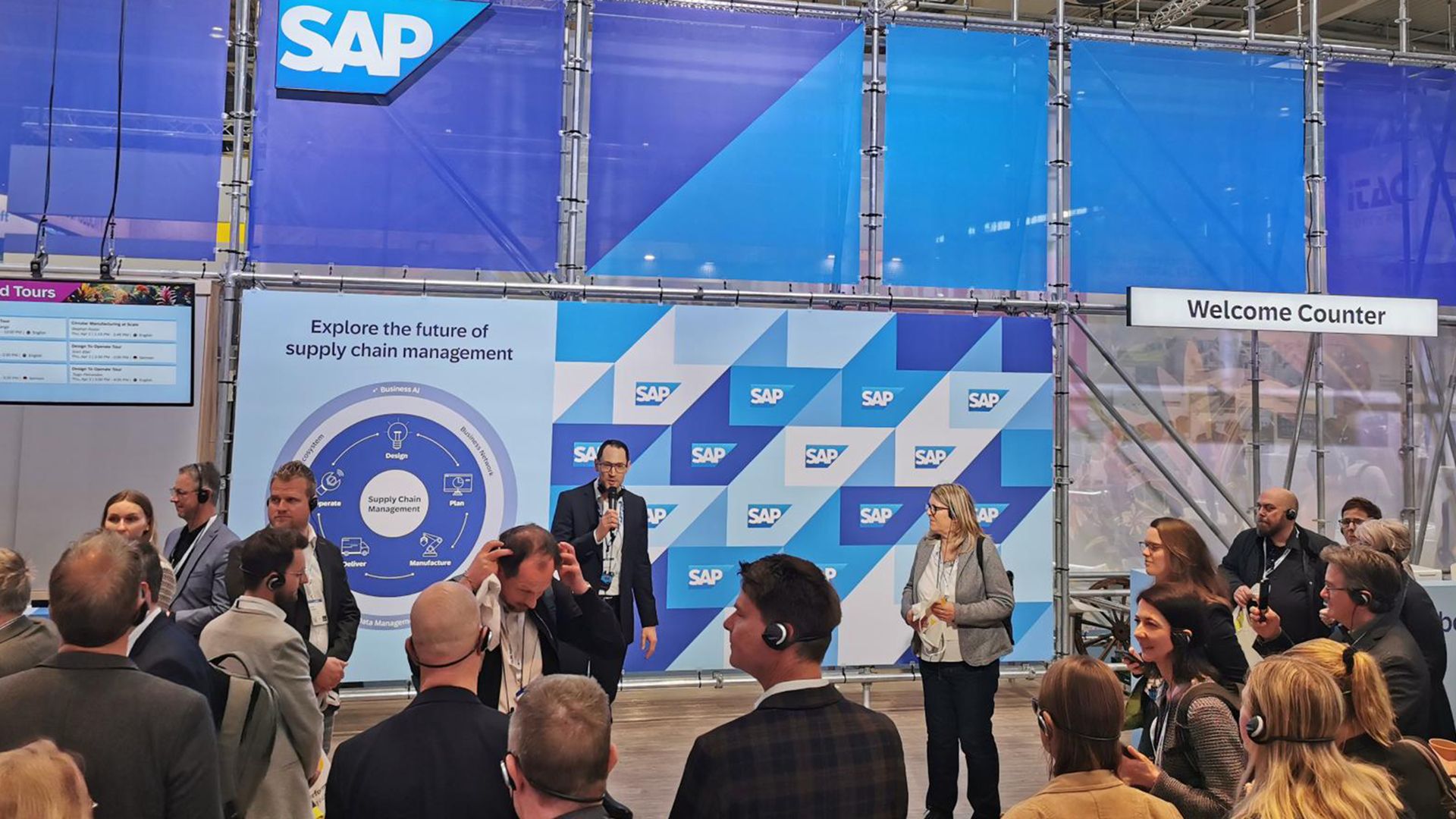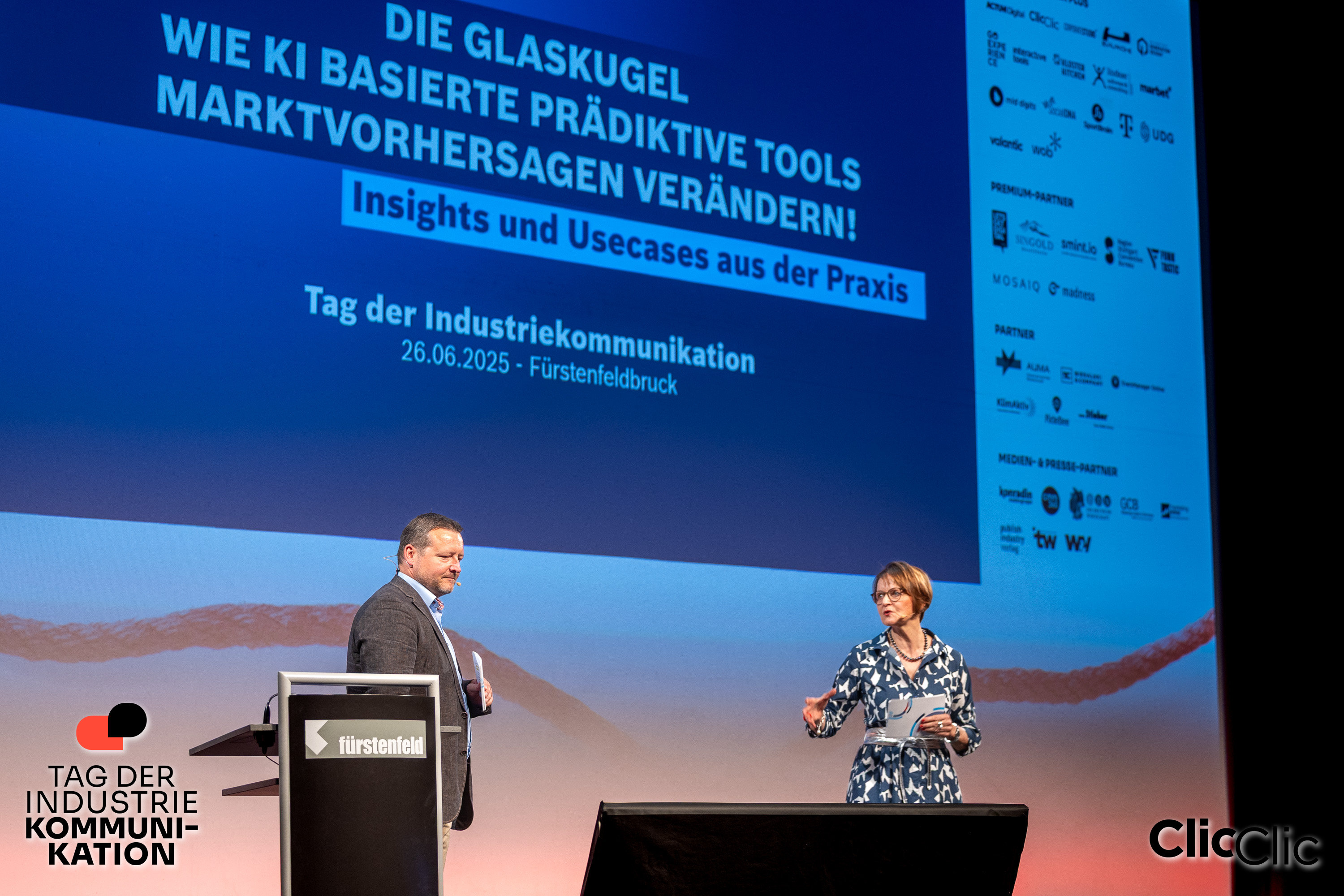Interview Ramona Kaden
"The most future-facing trend is to stay open to new things."
Photo: bvik
Photo: bvik
Ramona Kaden, Managing Director of the Bundesverband Industrie Kommunikation (bvik), on the latest developments in marketing budgets, trade fairs as a permanent fixture in the marketing mix and the opportunities that automation and AI hold for the future.
m+a report: The study "Bundesverband Industrie Kommunikation (bvik)", which has been conducted annually since 2011, was published for 2025 on 2 September. Who should read it—and why is it worth a look?
Ramona Kaden: A close read rewards a broad audience. The findings are especially relevant for industrial marketers—our members frequently use the cross-industry comparisons and benchmarks as a solid basis for internal budget negotiations. Executives and managing directors can quickly gauge the economic and market climate, while creative agencies gain actionable insights into their clients’ challenges and emerging developments.
First things first: last year, marketing budgets rose modestly versus 2023 (+1.7 per cent), and more than three-quarters of respondents expected budgets to increase or hold steady over the next three years despite cost pressures. Does this year’s study confirm that trend?
Marketing budgets have, in fact, declined slightly this year—the first drop since the study began—even as costs continue to rise. There are many contributing factors, but overall sentiment remains positive: 71% of respondents expect budgets to hold steady or increase in the coming years.

"Especially for lead generation, large international trade fairs are the top choice."
Ramona Kaden, Managing Director of the German Industry Communications Association (bvik)
External budgets have traditionally prioritised paid media, content creation, and external events. Is that still the case this year—and what role do trade fairs and business events play in the current budget mix?
Yes—almost 90% of participants plan external budgets, especially for paid media and trade fairs. By contrast, content creation has lost some budget relevance, not least because AI tools now enable many tasks to be handled in-house.
Trade fairs and events have long been the largest budget line, at just under 40%. This year’s data again confirms that trade fairs remain the most important tool for B2B lead generation. Major international trade fairs top the agenda, followed by regional shows and other event formats.
At the Tag der Industriekommunikation (TIK) 2025, Kai Halter, CEO of bvik, also spoke of trade fairs as lead magnets. At the same time, he emphasised the need for professional digital marketing to ensure visibility in highly competitive markets. How can companies dovetail these two worlds in a meaningful way today?
The handoff between physical and digital is still a common challenge, as we hear repeatedly at trade fairs. Lead generation and customer acquisition should be designed as an end-to-end journey, not a set of isolated tactics. That’s why a consistent, standardised brand experience across channels is essential. Visitors who discover a brand at a show should encounter immediate digital touchpoints—QR codes, personalised landing pages, follow-up flows—that seamlessly extend the on-stand experience and keep them engaged; conversely, digital channels should guide prospects toward meaningful on-site interactions.

Kai Halter, Chairman of the bvik, at the Industrial Communication Day 2025 in Fürstenfeldbruck. Photo: ClicClic/TIK2025
At the same time, companies also need to maintain proper data management so that potential customers receive the right information at the right time. Today, a professional digital presence is just as indispensable as a trade fair stand.
The 2024 study shows that roughly 80% of trade fair budgets go toward on-site presence. In your view, how effectively are companies converting that spend into digital reach and lasting visibility?
It does work—but often via different budget lines. Post‑pandemic, most trade fairs have reverted to in‑person formats, and many hybrid offerings haven’t persisted. The digital activations that do remain are typically far more cost‑effective than, say, a multi‑storey stand, so the “80% presence” figure shouldn’t be misread as a lack of digital.
In practice, much of the amplification happens through social media, content, PR, newsletters, and paid campaigns—costs that sit in other budget categories. So while the on‑site spend is high, the translation into digital reach and lasting visibility is achieved, just accounted for elsewhere.
Against the backdrop of scarce resources: With resources tight, which formats are rising in importance—major flagships, specialized events, or regional shows—and how should companies decide if a trade fair is strategically worthwhile?
Leading international trade fairs are relied on most—especially for lead generation—while smaller shows and specialised conferences remain highly relevant.
Cost–benefit analysis is increasingly central to internal planning, and organisers are expected to supply the necessary data. A major digital push, supported by AI, is needed to deliver meaningful metrics beyond basic visitor counts.The cost-benefit analysis is becoming increasingly relevant for the internal planning of our member companies. Trade fair companies are also called upon to provide the relevant data. In any case, a massive digital push paired with AI will be needed to provide relevant data beyond just visitor numbers.
The bvik regularly visits trade fairs and analyses industrial exhibitors’ appearances. Which developments are currently standing out to you?
The contrasts between trade fairs are striking. At last year’s Chillventa in Nuremberg, nearly every booth highlighted sustainable stand design; a few weeks later at another show, sustainability barely featured. The sectors clearly differ here.

bvik trade fair tour at the TEKO stand at Chillventa 2024 in Nuremberg. Photo: bvik
That said, some clear trends are emerging: most companies now prioritise communication zones and open, dialogue‑centric concepts, with fewer physical exhibits and less pure product show-and-tell. Data capture at stands is increasingly digital as well—iPads replacing lead sheets, and sensor-based tracking of visitor flows, including in catering areas.
The next bvik trade fair tours
Fair tour of Fachpack 2025: 24 September, 14:15 to 17:00 (Nuremberg Exhibition Centre)
Exhibition tour Blechexpo & Schweisstec 2025: 22 October, 14:00 to 17:00 (Stuttgart Trade Fair Centre)
Swissbau 2026 trade fair tour: 21 January, 11:00 to 13:00 (Basel Exhibition)
Tour of the Light+Building 2026 trade fair: 10 March, 14:00 to 16:30 (Messe Frankfurt)
If the era of pure product showcases is over and trade fair appearances are now aligned with strategic marketing goals—from lead generation to brand positioning—what does that mean for concept design, objective-setting, and success measurement?
The trade fair planning process has shifted. Each show a company attends now has a clearly defined focus—a kind of persona: net‑new lead generation, existing‑customer care, brand/image building, or competitive analysis. Objectives must be set upfront, and the stand designed accordingly.
As a result, stands are increasingly modular. Many companies maintain an inventory of interchangeable elements to configure their presence strategically for each show. The benefits: more sustainable material use and a consistent brand look—despite high flexibility.

Photo: bvik
"Put simply, success at trade fairs comes down to relevance, experience design, and sustainability."
Ramona Kaden, Managing Director of the Bundesverband Industrie Kommunikation (bvik).
Measuring success is also becoming increasingly strict, depending on the objective. As already mentioned, much of this is now more data-based. Our CEO Kai Halter says: "I'm trying to establish the idea in my team that every marketing euro must generate three euros more sales."
In your opinion, what distinguishes a successful trade fair presentation from an average one?
In general, a successful trade fair presentation is characterised by relevance, staging and sustainability - and visibly contributes to the company's goals.
There is no general answer to this question, however, as the goals that are achieved with trade fair appearances and other events are so different, and so are the best possible realisations.

bvik trade fair tour at the Hannover Messe 2025 at the SAP stand. Photo: bvik
TIK 2025 underscored the close alignment of marketing and sales as vital to the industry’s future. Where do you see the biggest pain points in practice today, and how are automation and AI reshaping this collaboration?
Marketing and sales often speak different languages—usually the result of long-standing structures and a reluctance to change. AI and automation can bridge this gap by unifying data, standardising definitions, and orchestrating real-time handoffs, breaking down silos and making collaboration far more effective. Companies that don’t seize this opportunity will lose speed and, ultimately, customer proximity.
How prevalent is AI in B2B marketing today—still early pilots, or already embedded in strategic planning?
There are indeed still major differences here, especially between industry and agencies. In industry, there are still major hurdles in terms of data protection, approval loops and bureaucratic processes, but there is certainly also some fear. Service providers, on the other hand, are usually already very active in using and integrating it into their services.

At TIK 2025, Silke Lang, Member of the Executive Board of bvik and Director Marketing Mobile Solutions, and Daniel Geßner, Director Global Sales Coordination & Operations, both Bosch Rexroth AG, spoke about the potential of generative to predictive AI models and the challenges that arise both in the definition of the project scope and in the progress of the project as well as in the use of the tools. Photo: ClicClic/TIK2025
There are still pronounced differences, especially between industrial companies and agencies. In industry, significant hurdles persist—data protection, lengthy approval cycles, and bureaucratic processes—along with a degree of caution. Service providers, by contrast, are generally much further along in adopting AI and integrating it into their offerings.
How does your association help members navigate future-facing topics such as AI, automation, and data-driven decision-making—and which of your formats have proven most effective?
Member needs vary by organisation type and topic, so we offer a broad portfolio. For complex subjects, we emphasise deeper upskilling: our B2B Expertise Workshops provide multi‑week courses led by lecturers and experts from academia and B2B practice.
We also recently published a comprehensive guideline on the legally compliant use of AI in collaboration with our member activeMind. Through ongoing dialogue with members, we surface current challenges and tailor support—via white papers, webinars, live workshops, and a steady stream of new formats.
Looking ahead, which B2B marketing developments do you see as truly future-shaping—and which are overhyped?
AI is here to stay. We need to move past fear and barriers, familiarise ourselves with its possibilities, and do so without abdicating responsibility.
For me, the most forward-looking trend is a mindset: staying open to what’s new and looking ahead with curiosity and optimism. The German economy faces major challenges, but they will be overcome with motivation and innovation—not by burying our heads in the sand.

